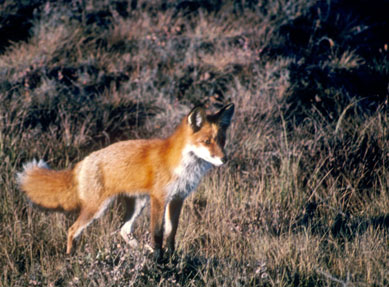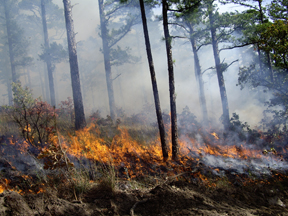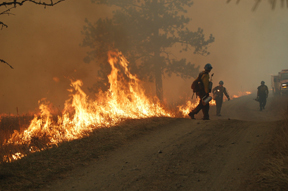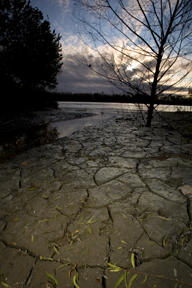 When it comes to Lyme disease, we tend to blame the deer. The ticks that carry Lyme disease are called deer ticks, aren’t they? But a recent paper in the Proceedings of the National Academy of Sciences says that its more productive to look at red foxes — the lack of red foxes — when looking for causes for the increase in Lyme disease.
When it comes to Lyme disease, we tend to blame the deer. The ticks that carry Lyme disease are called deer ticks, aren’t they? But a recent paper in the Proceedings of the National Academy of Sciences says that its more productive to look at red foxes — the lack of red foxes — when looking for causes for the increase in Lyme disease.
While white-tailed deer are host to the adult ticks, young ticks favor small mammals such as mice. When coyotes move in, red fox numbers are reduced. And the foxes are more effective at catching mice than coyotes are. With coyotes in the neighborhood there are more mice, more hosts for the young deer ticks, and more Lyme disease all around.
Read the paper in PNAS, here. (Subscription or fee required. The abstract is free.)
Or read the University of California at Santa Cruz press release, here.
Finally, there is a Science News report on the paper, here.
Photo: Jim Thiele, courtesy US Fish and Wildlife Service

 Many ecosystems depend on fire. While wildfires devastate the human landscape, usually wildlife doesn’t fare too badly. If a species is rare because of habitat loss, it may suffer when a wildfire changes that habitat, but mostly, on the population level and in the long term, wildlife does OK.
Many ecosystems depend on fire. While wildfires devastate the human landscape, usually wildlife doesn’t fare too badly. If a species is rare because of habitat loss, it may suffer when a wildfire changes that habitat, but mostly, on the population level and in the long term, wildlife does OK.
 Things have been dry in the Midwest this year. So far the biggest impact seems to be fish kills in bodies of water that are drying out. However, according to an Associated Press article that ran in the
Things have been dry in the Midwest this year. So far the biggest impact seems to be fish kills in bodies of water that are drying out. However, according to an Associated Press article that ran in the